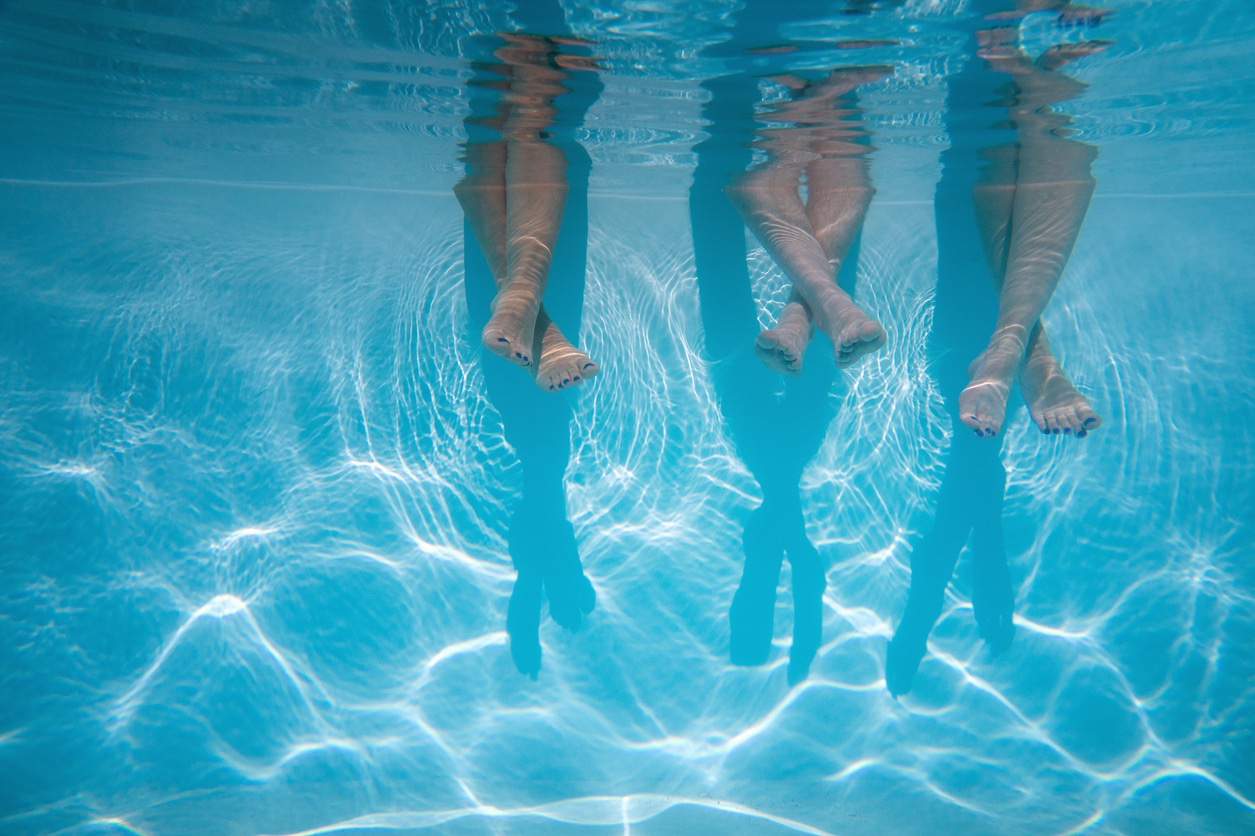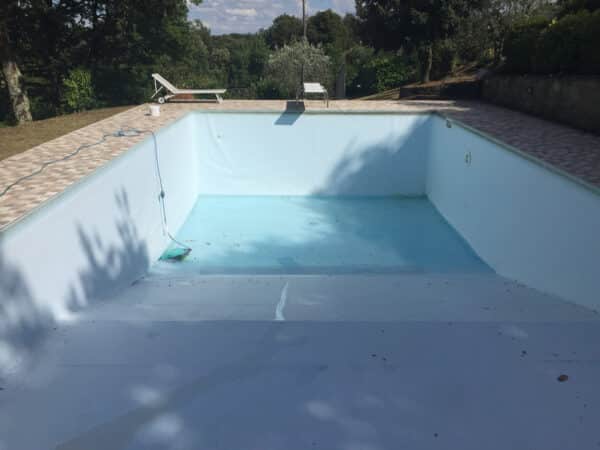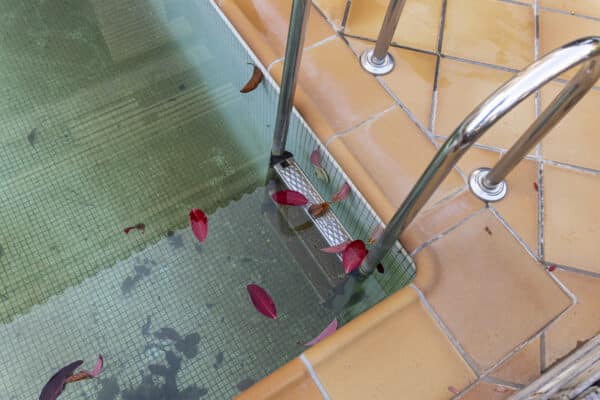There are a lot of misconceptions about the pool, how to care for it and what certain things mean. Well, the experts at Aquaman Pools are here to clear up the confusion. Here are some of the most common pool-related myths… and the truth behind them.
Clear Water is Clean Water — Everyone wants a crystal clear swimming pool to look at and dive into… but is clear water automatically an indication of clean and healthy pool water? Not always. Pool water can be a little deceptive because most people assume cloudy pool water means something it wrong and clear water means it’s healthy and safe. However, sometimes the pool’s chemical balance can be out of whack yet the water still looks clear because the pool water can hold microscopic contaminants. Bottom line: it’s important for pool owners to test their water on a weekly basis to ensure that clear water is indeed clean water.
Too Much Chlorine Stings The Eyes — Chlorine gets a bad rap and is behind a number of myths, including the fact that too much of it in the pool water can sting swimmers’ eyes. However, chloramines are actually to blame for those red, irritated eyes. Chloramines are what remain in the water when chlorine attacks and oxidizes contaminants, and they actually only cause that irritation when the pool’s chlorine levels aren’t high enough! Mind blown, right? Making sure chlorine levels are balanced will eliminate this problem.
The Smell of Chlorine Signifies a Clean Pool — Swimmers shouldn’t have to detect the scent of chlorine to determine whether or not the pool water is clean. In fact, it is another signal, along with those irritated eyes, that the chloramine levels are too high. If swimmers detect the smell of chlorine, they are actually smelling the chloramines… and this means that the pool actually needs more chlorine.
Saltwater Pools Don’t Use Chlorine — Once again, chlorine is getting all the attention. And while many people turn to saltwater pool systems because they want to eliminate the use of chlorine, they should know that saltwater pools don’t need added chlorine because the systems itself generates its own. A saltwater chlorine generator converts salt into usable chlorine. And while many people enjoy the softer water produced by this system, they should know that saltwater pools still use chlorine.
Wait 30 Minutes After Eating to Swim to Avoid Getting Cramps — Remember when Mom repeated this old adage all summer long? Turns out there is no real need to wait any amount of time after eating to dive in. Swimmers are unlikely to get cramps in the pool after eating unless they are doing some extremely rigorous physical activity. And that could happen in or out of the pool for that matter.
Chlorine Turns Hair Green — Once again the rumors point to chlorine as the swimming pool bad guy… but it’s innocent! Copper is actually what gives typically lighter-hued hair a greenish tint after swimming. Copper sulfate in the pool water helps prevent algae from growing, but it can also cause hair to turn a bit green after one spends a long time in the water. The good news is there is a quick fix — rinsing hair in clean water after a dip in the pool can help eliminate this from happening.
There are many myths about swimming pools and the water. For homeowners with questions about the health of their pool water, the professional pool technicians at Aquaman Pools are happy to answer any questions.


